How to Set Boundaries with Clients Without Feeling Guilty
Table of Contents
1. Step 1: Shift from Doer to Expert
2. Step 2: Define Your Support Process Up Front
3. Step 3: Say It With Confidence
4. Step 4: Stand Behind Your Boundaries When They’re Tested
5. Step 5: Build a Business That Makes Boundaries Easy
6. Set Boundaries That Clients Respect and Still Want to Pay For
You didn’t start your business to be available 24/7, answer weekend messages, or say yes to every “quick favor.” Yet many consultants find themselves doing exactly that, feeling resentful, exhausted, and unsure how to reset the relationship without damaging it.
If you've ever justified saying yes by thinking, “I just want to be helpful,” only to find yourself overdelivering, undercharging, and constantly reshuffling your schedule to meet last-minute demands, you’re not the only one.
What most consultants struggle with isn’t client work, it’s drawing the line.
The fear of pushing back is real. You worry they’ll walk. That they’ll think you're difficult. That standing firm means losing income. But healthy clients don’t punish boundaries, they respect them.
Creating structure helps your clients get better results while protecting your time. The more they work inside your process, the more they begin to treat you like the expert you are. In fact, clear expectations often lead to higher rates, cleaner scopes, and fewer revisions; especially if your offers are designed to support this from the start.
Consultants who shift from hourly or done-for-you services into advisory roles often find that setting boundaries is directly tied to how their services are structured. When your offer is designed to support client transformation and your capacity, boundaries don’t just happen—they hold.
If you're constantly renegotiating your time or watching your projects expand without a conversation, it might be time to rethink how you're packaging and pricing your work. Structuring offers around client outcomes, rather than just deliverables, is one of the most effective ways to protect your time and reduce overfunctioning. A value-based consulting offer creates margin, sets clear expectations, and supports a pricing model that reflects your expertise, not just your hours.
This guide walks through how to set boundaries with clients clearly and professionally. You'll learn what to say, how to lead with confidence, and why boundaries are one of the most profitable systems you can build.
Prefer to watch? I walk you through the full breakdown of boundary-setting strategies that protect your time and grow client trust in the video below
Step 1: Shift from Doer to Expert
Before you can set strong boundaries with clients, you need to address how you see your own role. Most of the boundary issues consultants face don’t begin with contracts, they begin with mindset. If you’re constantly defaulting to “fix it” mode or staying too available, there’s a good chance your old habits from employment are bleeding into how you run your business.
The Mindset Trap Most Consultants Fall Into
Most new consultants bring a carryover mentality from corporate or agency life. They’re used to being the person who jumps in, solves the problem, and takes on whatever needs to get done. That mindset might have earned promotions and praise in a salaried role, but it creates a pattern of overfunctioning when applied to consulting.
The issue isn’t that you’re helpful. The issue is that you start owning results that were never yours to carry.
If you’ve found yourself:
Saying yes to tasks outside your scope
Writing the deck, managing their team, or fixing tech issues
Accepting extra meetings or surprise requests without realignment
…you’re not operating as a consultant. You’re filling in as the doer.
And here’s what happens: your clients stop viewing you as a strategic partner. You become the person who says yes, the one who’s always available, always accommodating, even when it chips away at your time, energy, and profit.
This is where strong consulting boundaries start, not with a cancellation clause or a new workflow, but with a decision to reposition yourself as the expert, not the extra.
If you’re still offering services that rely on reactive task delivery or “just in time” requests, it might be time to reevaluate the model you’re using. Many of my clients begin to see lasting change when they move from done-for-you delivery into an advisory consulting model that defines their role and expectations upfront.
Why Clients Respect Experts Who Set Limits
The assumption many consultants make is that boundaries will push clients away. In reality, strong structure does the opposite. Healthy clients don’t see boundaries as a problem—they see them as a signal of professionalism.
Clients want to work with someone who communicates clearly, values their own time, and leads the engagement with confidence. When you say, “Here’s how I work best,” the right clients don’t push back. They align.
The ones who resist? They’re often used to working without structure—and are looking for someone to accommodate that lack of clarity.
Here’s what happens when you don’t set limits:
You overfunction
Your client underfunctions
Results stall
Resentment builds
Trust erodes
This cycle is avoidable. Strong client communication boundaries give you a way to set the tone early and reinforce it throughout the engagement. That includes how you deliver your work, what clients can expect from you, and how you respond when something falls outside the original scope.
The more structure you provide, the more your clients trust your leadership. And trust is what leads to higher-value engagements, better outcomes, and long-term retention.
If part of what’s holding you back is the fear that setting limits makes you look difficult, now’s the time to reframe that. Saying no clearly and professionally doesn’t make you hard to work with—it makes you someone your clients can rely on. That shift is also what helps you stop being a people pleaser in business and start showing up as the expert they hired.
Step 2: Define Your Support Process Up Front
Setting boundaries isn't just about what happens when things go wrong. It's about designing your process so those moments don’t keep happening in the first place. Clear boundaries begin long before anyone pushes them, they start during onboarding.
Start with Clear Onboarding Expectations
If your onboarding is unclear or inconsistent, you're not setting boundaries, you’re setting the stage for confusion. When clients don’t know how and when to communicate with you, they’ll fill in the gaps. That often means late-night messages, last-minute meetings, or expectations that were never agreed to in the first place.
The best way to avoid this is to clearly separate two things:
Your contract: This covers legal terms, deliverables, timelines, and payment.
Your onboarding materials: This outlines how to work with you, how support works, and what day-to-day collaboration looks like.
In your onboarding guide (or welcome email), include:
Your availability (e.g., “I check email Tuesday–Thursday from 9–4 p.m.”)
Support process (e.g., “Non-urgent requests should go through our shared Trello board”)
How to request additional time or meetings
What’s included in the engagement, and how additional support is scoped
A phrase I use often to set the tone professionally is:
“To help you get the best possible results, I’ve created a simple process that makes it easy for you to get what you need without the overwhelm. Here’s how to reach me, what I’ll be delivering, and how we’ll make progress together.”
This isn’t about creating friction. It’s about giving your clients a clear process to follow—one that builds momentum and reduces dependency. If your current onboarding process isn’t doing that, you may want to look at how your offer is structured. The right consulting engagement model will naturally support clearer boundaries, stronger positioning, and better outcomes.
Be Proactive, Not Reactive
Most boundary issues don’t happen all at once, they build gradually. It starts with a “quick favor,” an unscheduled message, or a request that seems too small to question. But these moments are exactly where your structure gets tested.
If you haven’t clearly communicated how support works, clients will make their own assumptions. That’s why setting availability windows isn’t just helpful, it’s foundational to building mutual respect.
Set expectations around:
When you’re available and how they can reach you
Which communication channels you check (and how often)
What counts as urgent and how to escalate if something truly is
Here’s an example of what I include in onboarding:
“For anything outside of our scheduled sessions, feel free to send a note via email. I check messages Monday through Thursday mornings and respond within 48 hours.”
This small script creates calm. It removes the need for your client to guess when they’ll hear from you. It also gives you a graceful, professional way to redirect last-minute requests without sounding defensive.
If a client asks for something outside of scope or after hours, one of my go-to responses is:
“That’s a great next step. I’d love to support you on this. Let’s talk about how we can add it to the engagement.”
You’re not saying no, you’re guiding the request back into structure.
And if you’re frequently fielding off-hours requests, there may be a bigger issue in how your offer is set up. Clear consulting support boundaries are easier to maintain when your client relationships are built around repeatable systems, not reactive delivery.
Step 3: Say It With Confidence
Setting boundaries doesn’t mean shutting people down, it means learning how to communicate with clarity. The biggest challenge for most consultants isn’t that they don’t have limits. It’s that they don’t know how to express them without sounding uncertain, defensive, or overly apologetic.
This is where tone and language matter. The way you communicate boundaries can either reinforce your authority or invite pushback. And when you’re leading a high-value engagement, your words carry weight.
What to Say (And What to Avoid)
You’ve probably heard the advice: “Just say no.” But when you're in a trusted client relationship, saying no directly can feel abrupt—or worse, risky. That discomfort is exactly why so many consultants water down their responses until the boundary disappears.
Here’s what you want to avoid:
“I’m sorry, that’s not part of the scope.”
“I wish I could, but I’m swamped.”
“That’s not really what I’m here for.”
Each of these phrases sounds hesitant. They can trigger negotiation, cause confusion, or signal that your boundaries are up for debate.
Now here’s what to say instead: confident, clean responses that preserve the relationship and your time:
“That sounds like a great next step. Here are a couple of ways we can make that happen.”
“We can absolutely explore that—let’s look at how we’d add that to your current engagement.”
“Thanks for sending this over. I’ll review it during my weekly check-in and get back to you on Tuesday.”
These phrases maintain forward momentum while reinforcing that you have a process. And the more structured your process, the more protected your time becomes—especially if you’re offering a consulting package designed around advisory deliverables instead of reactive tasks.
How to Use Redirection Instead of Rejection
The real secret to handling difficult requests without damaging the relationship? Don’t reject, redirect.
Most clients aren’t trying to overstep. They’re simply unclear on how the process works, especially if it hasn’t been clearly outlined. Your job isn’t to shut them down—it’s to guide the conversation back to the structure you’ve already established.
Let’s say a client asks for a last-minute meeting:
Don’t say: “No, I can’t do that.”
Do say: “My next available time is Thursday at 2 p.m. Would that work?”
If they ask for extra deliverables not included in your scope:
Don’t say: “That’s not part of our agreement.”
Do say: “That sounds like a valuable addition. I’d be happy to price that as an add-on or explore it in our next phase.”
These phrases don’t just protect your schedule—they also reinforce the value of what you offer. You’re not just responding to requests. You’re directing the engagement. That subtle shift changes how clients perceive your role.
Setting boundaries doesn’t mean being inflexible. It means honoring the system that allows you to deliver your best work. If your business is still built around saying yes to anything, at any time, it might be time to shift toward a more structured consulting offer that protects your time from the start.
And here’s what happens when you do: the more clearly you communicate your boundaries, the more your clients trust you. Professionals who respect their own time naturally earn that same respect from others.
If you want to work with clients who follow your process, who value your insight, and who pay for your expertise, start practicing fewer apologies and more: “Here’s how I can help.”
Step 4: Stand Behind Your Boundaries When They’re Tested
You’ve set your boundaries. You’ve communicated them clearly. But here’s the real test: what happens when a client pushes back?
This is where a lot of consultants fold, not because they don’t believe in the boundary, but because they aren’t sure how to hold it without creating tension. The reality is, boundaries aren't about being firm for the sake of firmness. They're about being clear, calm, and consistent—even when things get messy.
Boundaries Aren’t About Control
If you’ve ever felt like a client was testing your limits on purpose, pause for a second. Most of the time, they’re not.
They’re not scheming to disrupt your calendar or wreck your workflow. More often, they’re under pressure themselves or they simply forgot the expectations that were set.
That’s why enforcing boundaries doesn’t require confrontation. It requires composure.
Your responsibility isn’t to change how your clients act. Your job is to be clear about what you will and won’t do, then follow through consistently.
So when a client oversteps, makes a last-minute ask, or forgets your availability, try not to personalize it. Redirect them, gracefully but firmly, back to the process you already outlined. And if that process is still evolving, it may be time to build a more defined client support structure that makes boundaries easier to maintain.
How to Respond to Client Pushback Professionally
The real test of your client communication boundaries doesn’t happen the moment you send the welcome guide or contract. It happens when someone asks for “just one more thing.” These moments are your opportunity to reinforce authority—without sounding inflexible.
Here’s how to respond clearly and professionally in the most common scenarios:
Client says: “Can we just hop on a quick call?”
You say: “I’d love to connect. My next available slot is Thursday at 11 a.m.—would that work?”Client says: “Can you take a look at this tonight?”
You say: “I reserve evenings for my family, but I’ll review this first thing Monday morning and get back to you then.”Client says: “Can you just handle this one thing for me?”
You say: “Great idea. We can definitely add that in—let’s talk about how it fits into the engagement or if it needs its own scope.”Client says: “Can you be available on weekends if needed?”
You say: “I dedicate weekends to personal time, but I’m available Monday through Thursday from 9–4 if anything urgent comes up.”
And here’s a line I use regularly to reinforce structure without sounding cold:
“I treat all my clients consistently and fairly, so we stick to the process we agreed on.”
This response is respectful, direct, and firm. It communicates that you lead with integrity and that your time is not available for constant renegotiation.
If you’re feeling drained, constantly stretched, or avoiding your inbox, that’s not just overwork, it’s the result of boundary erosion. And it usually points back to how your business is structured. Creating a clear and repeatable consulting engagement framework makes it easier to stand behind your process, without burning out in the process.
Holding the line doesn’t make you difficult. It makes you credible.
Step 5: Build a Business That Makes Boundaries Easy
Strong boundaries aren’t just about communication. They’re built into how your business operates. If you constantly feel like you’re negotiating scope or redefining your role, the issue may not be your clients—it may be how your offer is structured.
When your services are vague or overly flexible, it becomes hard to hold the line. And when every client gets a custom setup, you lose track of where your time is going and how much access you’ve actually promised.
Structure Offers That Protect Your Time
Most consultants don’t have a boundary problem.
They have a business model that prevents boundaries from sticking.
If your current offer has:
No clear scope
No delivery limits
Undefined access
…you’ll always feel pressure to say yes—just to keep things moving.
Here’s the solution: design your offer so it protects your time before the client ever pushes the edge.
Build your contract with:
A defined scope of work with deliverables that are easy to name
Standardized access (e.g., weekly calls, Slack or email hours)
Upgrade options for clients who want additional support
Clear language across onboarding, calls, and emails that reinforces expectations
This is where consulting retainer boundaries make your life easier. You no longer have to make judgment calls on how much support is “too much.” Instead, clients know upfront what’s included and how to get more if they need it.
“Here’s what’s included in your consulting package. If you’d like extra sessions or deeper strategy support, we can build that into next month’s plan.”
You’re not just drawing a line. You’re giving your clients a clear, confident roadmap that helps them grow without burning you out. If you're still offering broad deliverables or overstuffed retainers, a shift to a more defined monthly consulting package may be the move that brings structure back into your week.
Charge for Clarity, Not Chaos
Let’s say the quiet part out loud: underpricing erodes boundaries faster than any difficult client ever could.
When your fee feels too low, you overdeliver to justify it.
You stay late on calls.
You respond to emails after hours.
You say yes to extras that were never scoped, just to make the price feel worth it.
And the irony? Those clients are often the ones who push hardest. The ones who ignore your process, resist your systems, and expect unlimited access.
On the other hand, premium clients respect boundaries by default. Why?
They’ve paid for clarity.
They want to work with a professional.
They understand they’re hiring you for outcomes, not unlimited availability.
Want to stop overdelivering and start leading? Raise your prices. Tighten your scope. Shift from time-based billing to a results-focused consulting model that’s built for sustainability.
This is exactly what I coach through inside Consulting Offer Accelerator and Fractional Freedom, because blurry boundaries are often a sign of a blurry offer. And a business built around flexibility instead of structure will always demand more than it returns.
Protecting your time isn’t about pushing people away. It’s about building something that lasts. When your offer supports your boundaries, you stop negotiating your time and your clients stop expecting you to.
Set Boundaries That Clients Respect and Still Want to Pay For
If you’ve been overdelivering, undercharging, or saying yes just to “keep the peace,” you’re not alone. But staying stuck in that pattern isn’t sustainable and it’s not required for success.
Here’s what we covered:
Strong client boundaries start with your mindset, not just your contract
Clear onboarding and defined support processes reduce confusion and protect your time
Confident, respectful communication builds trust not tension
Business models that support boundaries make enforcement easier and more consistent
Premium pricing earns respect, simplifies delivery, and sets the tone for healthy relationships
If you’re ready to stop running your business on overfunctioning and start building something scalable, structured, and sane, you don’t have to figure it out alone.
Inside Consulting Offer Accelerator, I’ll walk you through how to:
Build a consulting offer that’s simple to deliver and easy to sell
Set boundaries that clients respect—and still want to invest in
Create a support structure that helps you grow without burning out
You’ve worked hard to build your business. Now it’s time to protect it.
FAQ
-
Start by setting expectations early—during your discovery call or onboarding process. Clarify your working hours, communication methods, and what’s included in the engagement. Reinforce those boundaries consistently through check-ins, onboarding documents, and how you respond to requests. The more structure you provide, the more your clients will respect the process.
-
Professional boundaries might include:
Responding to emails only during business hours
Using one primary channel for client communication
Limiting the number of revision rounds or calls
Outlining what's included in the scope—and what’s not
Clarifying turnaround times and expected client responsibilities
These boundaries help protect your time, energy, and deliverables so you can focus on providing high-value support.
-
The key is to stay calm and professional. Acknowledge their concern without absorbing their tone. Reinforce the boundaries already in place and restate your expectations for communication. For example: “I’m here to support you, and I do my best work within respectful, productive conversations.” If disrespect becomes a pattern, it may be worth stepping away from the engagement entirely.
Check Out More Posts Like This…
I’m Laura, a growth strategist and mentor to consultants.
As a serial entrepreneur who has scaled multiple six and seven-figure online and offline companies over the last twenty years, I can genuinely say that consulting is the best industry I’ve ever been in. Not only does it give me the freedom to spend time with my family and do the things I love (hello, tennis!), but working alongside world-changing entrepreneurs on their business strategies is one of the most rewarding roles I’ve had as an entrepreneur. This is a blog where I share my secrets of how to become an in-demand consultant.


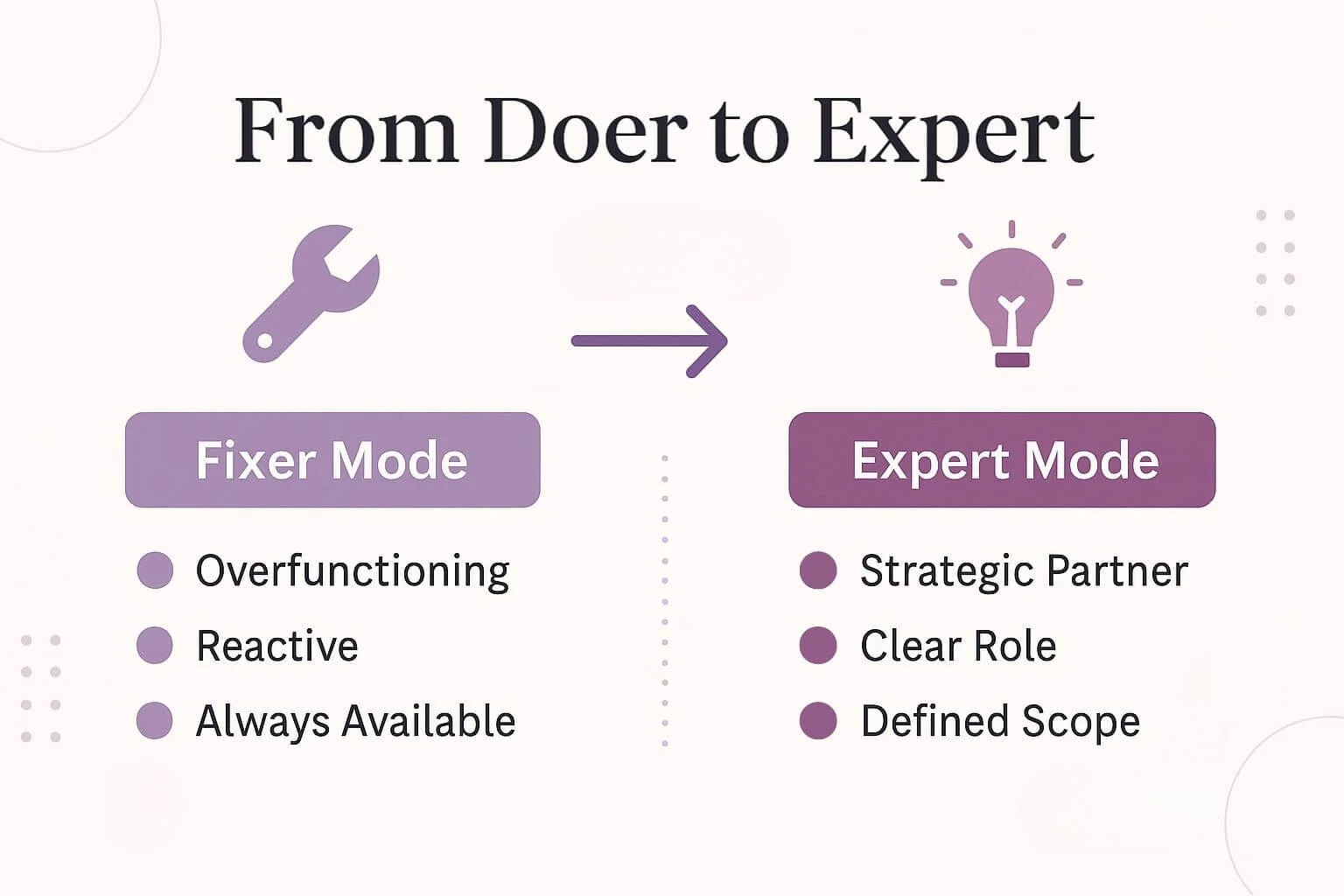
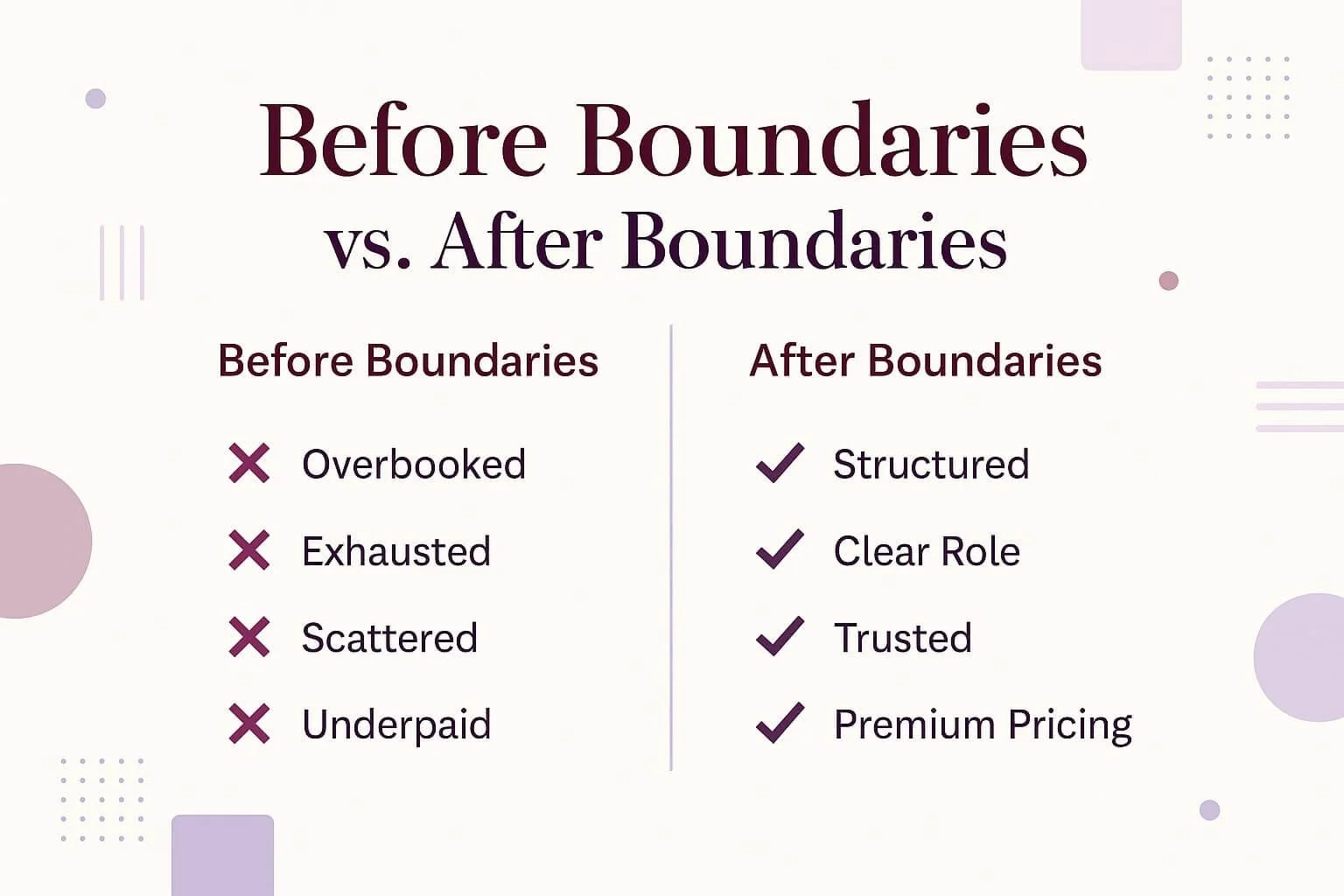

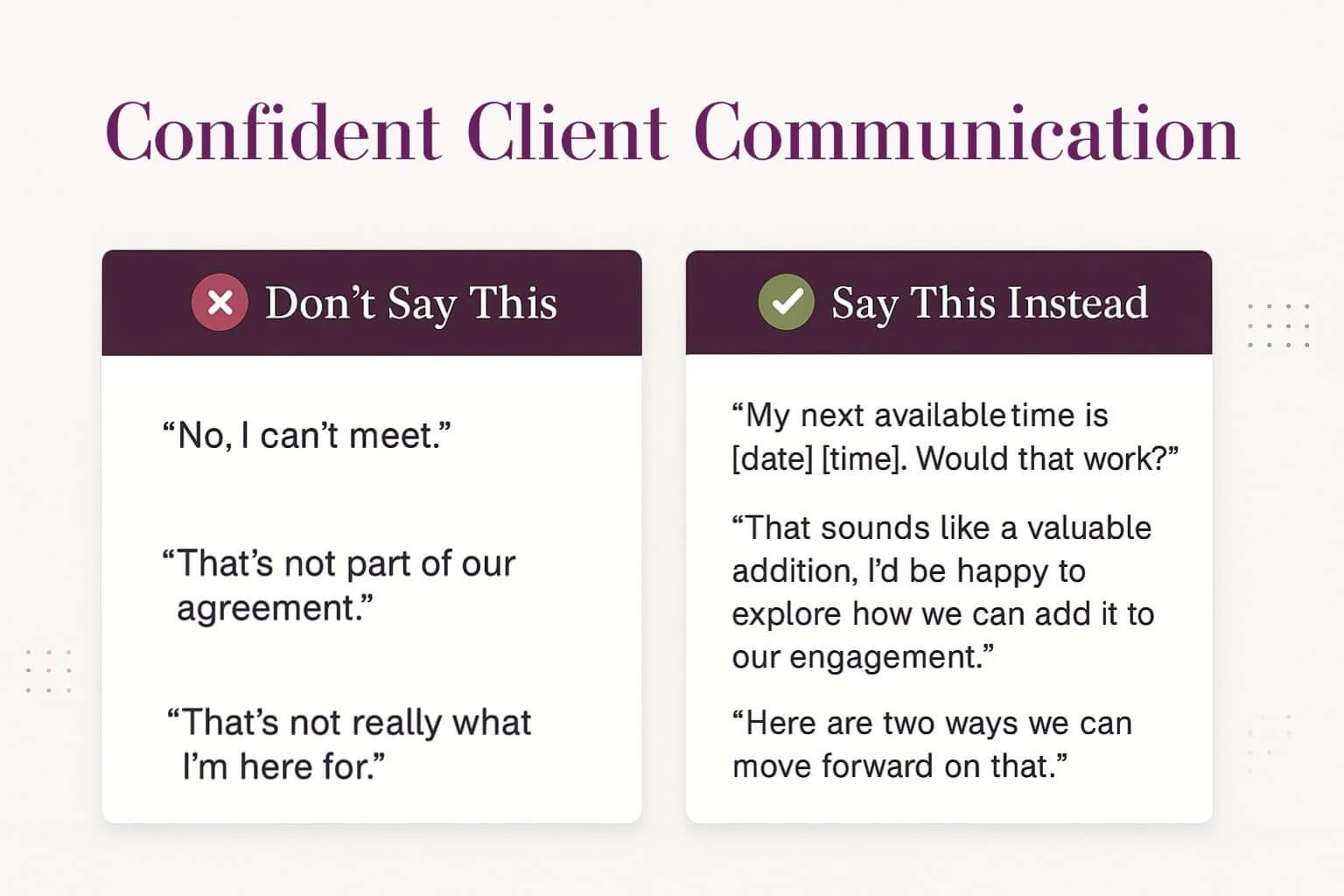
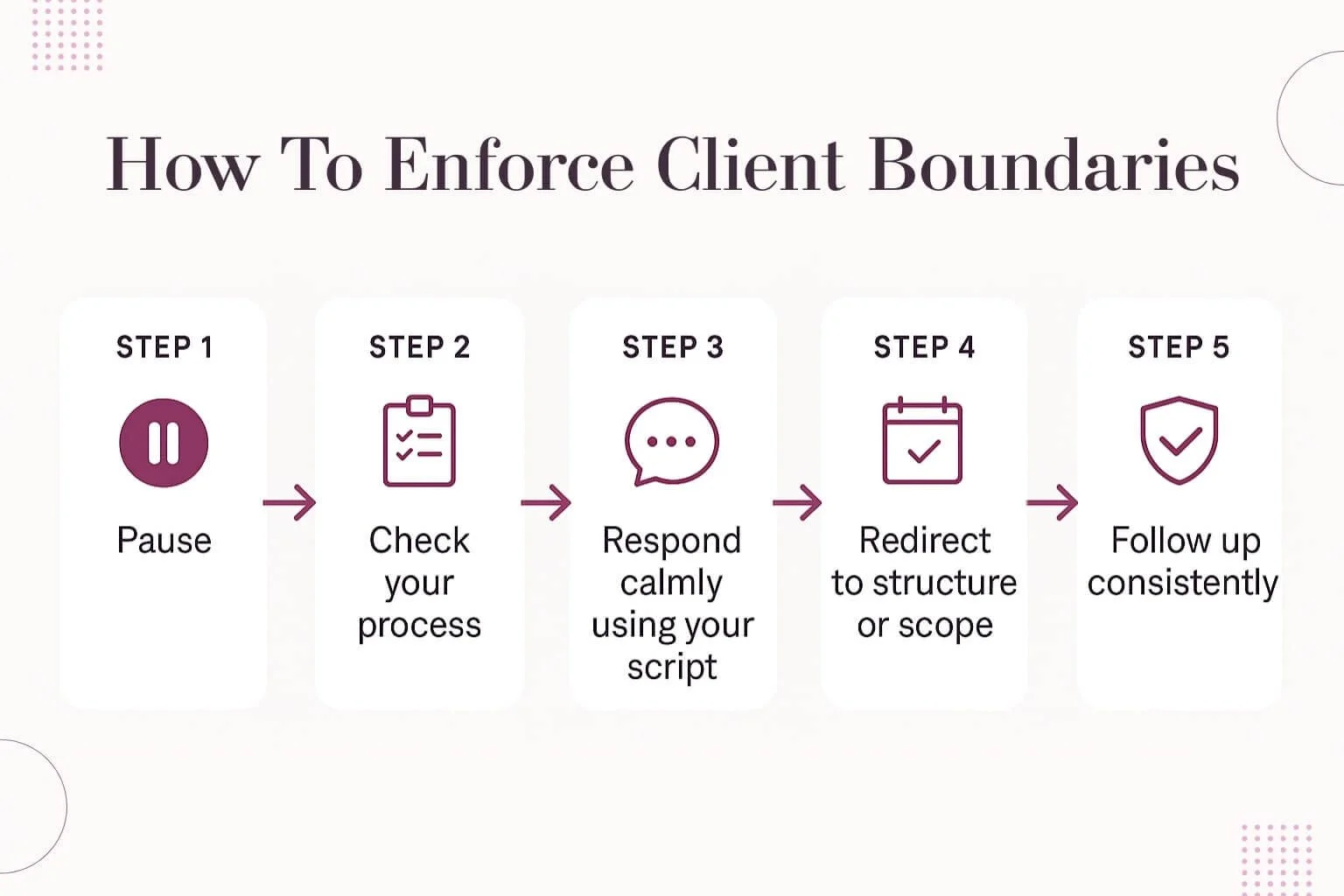
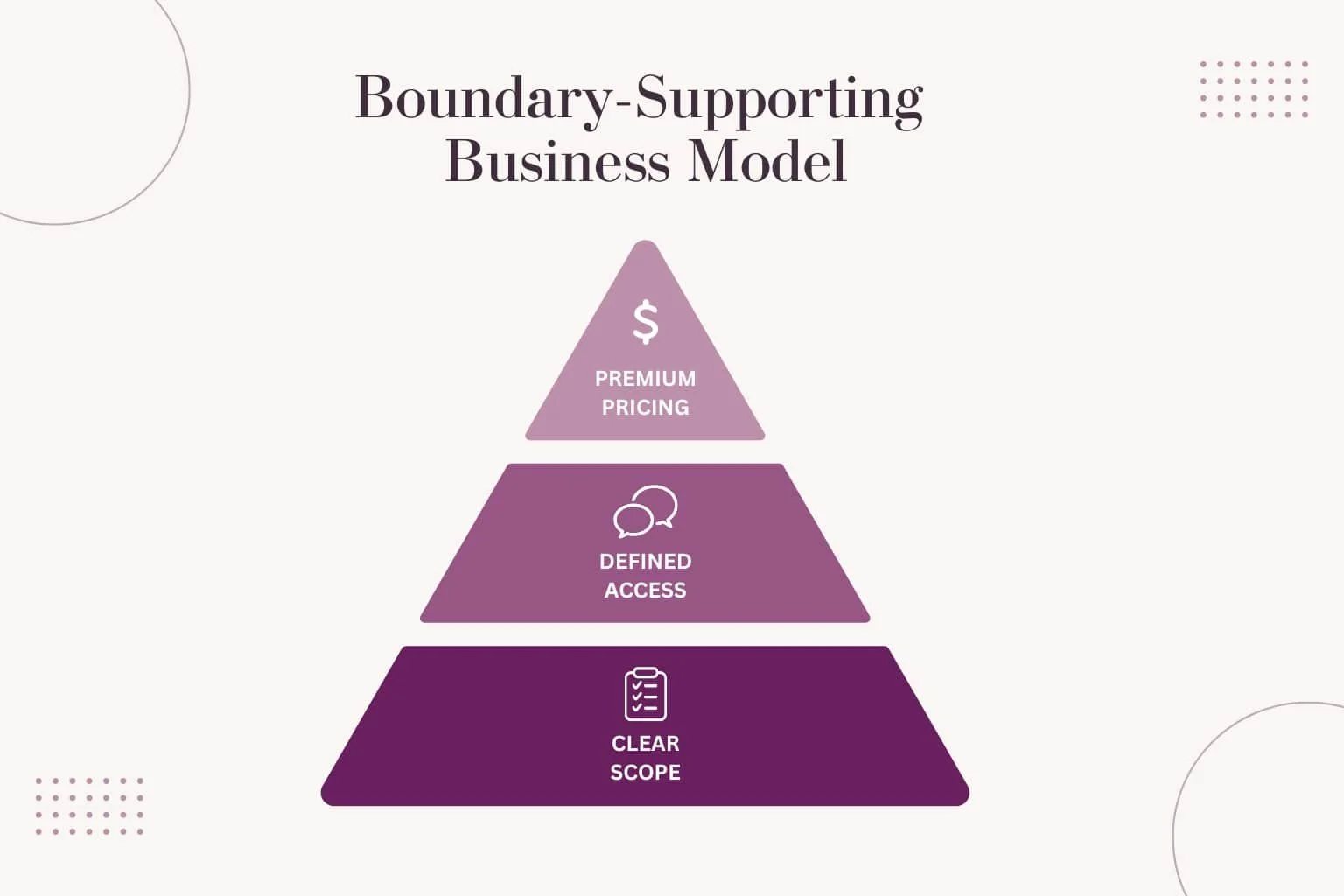













Learn a decision making framework to pre-commit priorities, set clear no criteria, and protect your time. Includes scripts and next steps.